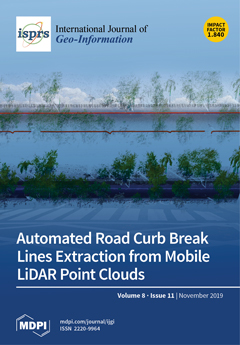Grassland coverage, aboveground net primary production (ANPP), and species composition are used as indicators of grassland degradation. However, soil salinization deficiency, which is also a factor of grassland degradation, is rarely used in grassland degradation assessment in semiarid regions. We assessed grassland degradation
[...] Read more.
Grassland coverage, aboveground net primary production (ANPP), and species composition are used as indicators of grassland degradation. However, soil salinization deficiency, which is also a factor of grassland degradation, is rarely used in grassland degradation assessment in semiarid regions. We assessed grassland degradation by its quality, quantity, and spatial pattern over semiarid west Jilin, China. Considering soil salinization in west Jilin, electrical conductivity (EC) is used as an index with ANPP to assess grassland degradation. First, the spatial distribution of the grassland was measured with information mined from multi-temporal remote sensing images using an object-based image analysis combined with classification and decision tree methods. Second, with 166 field samples, we utilized the random forest (RF) algorithm as the variable selection and regression method for predicting EC and ANPP. Finally, we created a new grassland degradation model (GDM) based on ANPP and EC. The results showed the R
2 (0.91) and RMSE (0.057 mS/cm) of the EC model were generally highest and lowest when the
ntree was 400; the ANPP model was optimal (R
2 = 0.85 and RMSE = 15.81 gC/m
2) when the
ntree was 600. Grassland area of west Jilin was 609.67 × 10
3 ha in 2017, there were 373.79 × 10
3 ha of degraded grassland, with 210.47 × 10
3 ha being intensively degraded. This paper surpasses past limitations of excessive reliance on vegetation index to construct a grassland degradation model which considers the characteristics of the study area and soil salinity. The results confirm the positive influence of the ecological conservation projects sponsored by the government. The research outcome could offer supporting data for decision making to help alleviate grassland degradation and promote the rehabilitation of grassland vegetation.
Full article





